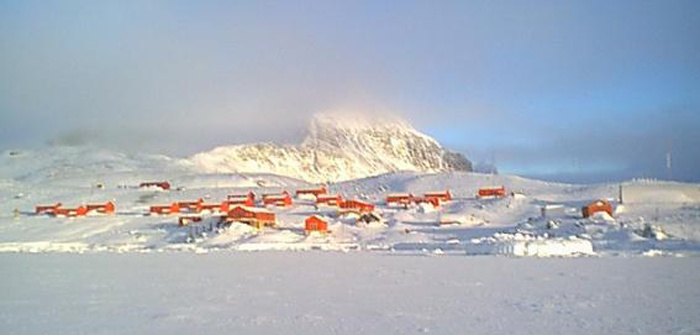A record temperature high has been set in the Antarctic peninsula, with researchers measuring a temperature of 18.3°C.
The record heat, recorded on the northern tip of the peninsula on February 6 by the Argentine research base Esperanza, was significantly warmer than the previous record of 17.5°C, set in March 2015.
Although it is unclear the long-term role that climate change may have played in the record high, in the short-term it is likely associated with a local weather phenomenon known as a ‘foehn’ event, a rapid warming of air coming down a mountainous slope, according to Randall Cerveny, the WMO’s weather and climate extremes rapporteur.
A committee of the WMO Archive of Weather and Climate Extremes (AWCE) will now attempt to verify the record. Cerveny said, “Everything we have seen thus far indicates a likely legitimate record but we will of course begin a formal evaluation of the record once we have full data from SMN (Servicio Meteorológico Nacional – Argentina’s national meteorological service) and on the meteorological conditions surrounding the event.”
In what has been a particularly balmy Antarctic summer the new record was followed a few days later by media reports of new temperature high of 20.75°C for the Antarctic region.
If verified, the record obtained by Brazilian researchers from a monitoring station on Seymour Island, part of a chain of islands off the Antarctic peninsula, would represent the first time that temperatures for the Antarctic region have exceeded 20°C. (The previous record for the Antarctic region – everywhere south of 60 degrees latitude – is currently 19.8C, obtained on Signy Island in January 1982.)
With the WMO seeking the raw temperature data for the Seymour Island monitoring station, Cerveny believes it is premature to speak of a new record at this stage: “We first need to analyse the very important station metadata, e.g. location, type of equipment, measurement practices, calibration of the instruments, etc. from the researchers involved. Once we have those data, we can begin a formal evaluation as to the observation’s validity.”
Cerveny says because this process “does not happen quickly” it would likely be some time before the AWCE committee can give their verdict on the potential record.
The Antarctic Peninsula, which is the northwest tip of Antarctica, protruding in the direction of South America, is one of the fastest warming regions on the planet. Temperatures there have increased nearly 3°C in the last 50 years.
Meanwhile, the amount of ice lost annually from the Antarctic ice sheet has increased at least six-fold between 1979 and 2017.



